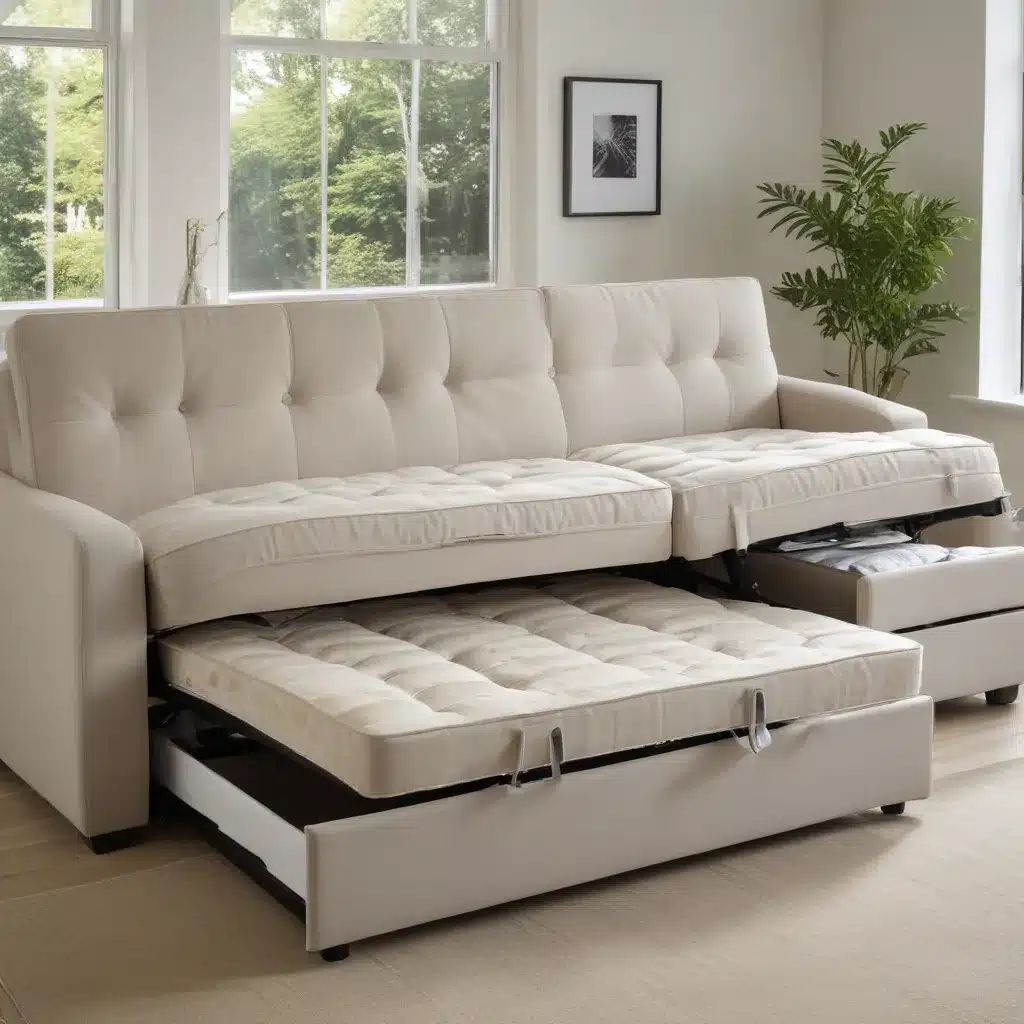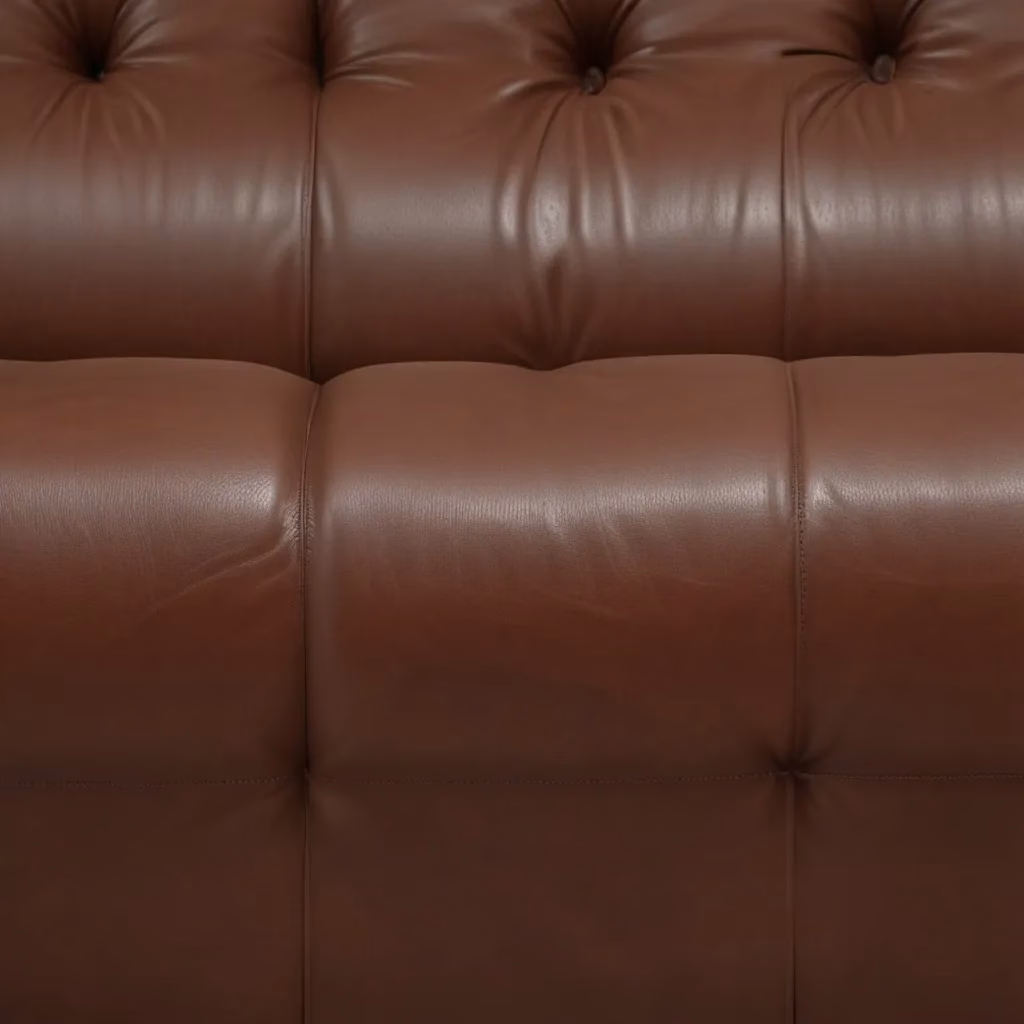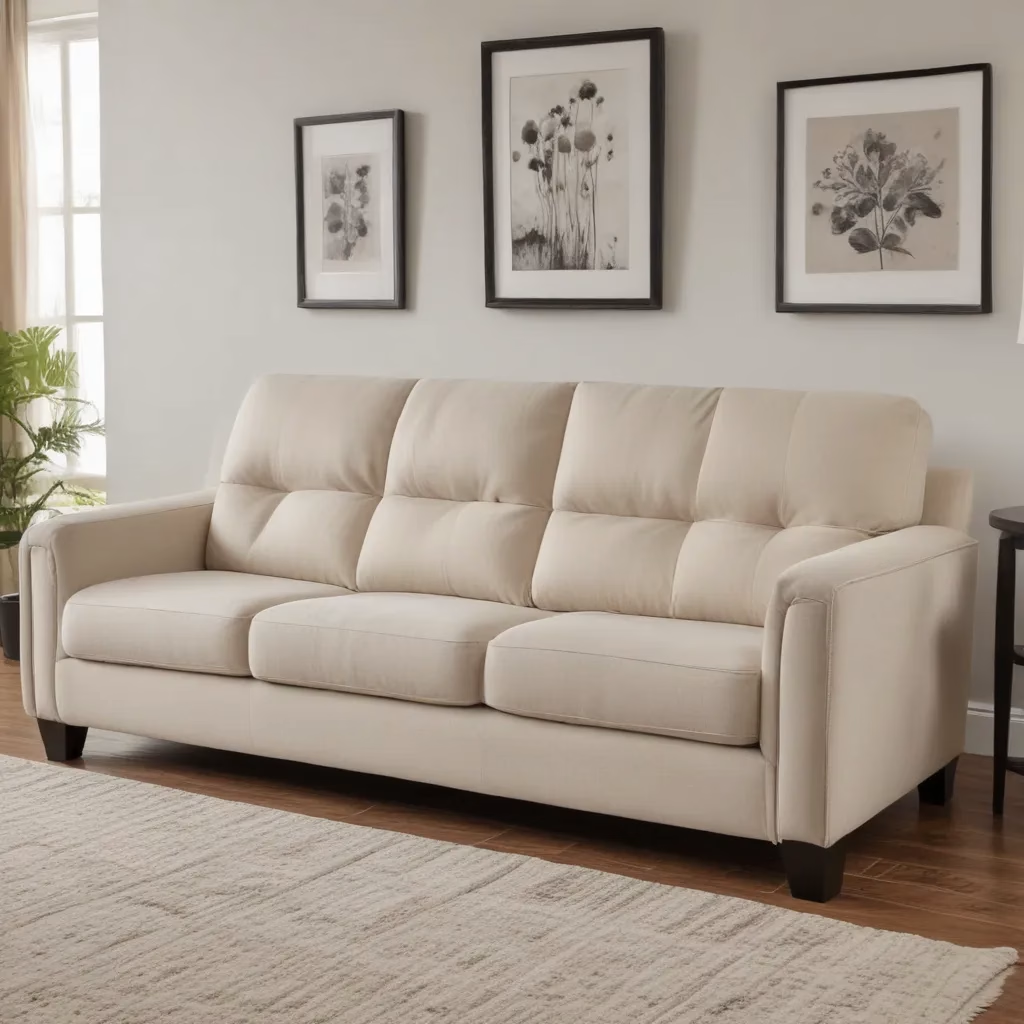Sleeper Sofas: The Good, the Bad, and the Lumpy
I’ll never forget the day my wife and I brought home our “dream” sleeper sofa. After scouring the internet for the perfect piece, we landed on a barely used West Elm model that had been marked down to a mere fraction of its original cost. “This is it,” I thought, “the end of a lifetime of complaints about flimsy mattresses and crossbars jabbing into our backs.”
Boy, was I wrong. As soon as we maneuvered the behemoth into place and pulled out the bed, it was clear we were in for more of the same. The mattress sagged so much in the center that it practically enveloped anyone who dared to lie on it, and the sides “tacoed” up in a way that made me feel like I was sleeping in a hammock rather than a proper bed.
As I would later learn from the Wirecutter article, the decrepitude of that mattress was no surprise. This has been the case with every sleeper sofa I’ve known, from the one my cousin used to sleep on at my grandmother’s house to the ones my roommates and I hauled from apartment to apartment in college. These so-called “luxury” pieces of furniture always seemed to come with the same problem: a mattress that had either been beaten to hell or parked so permanently on the carpet that no one could tell you when it arrived.
So, what’s the deal with sleeper sofas, anyway? Why do they always seem to come with such subpar sleeping experiences? And more importantly, is there anything we can do to fix them? That’s exactly what I set out to discover.
The Anatomy of a Sofa Bed
To understand what makes a sofa a sofa bed, we first need to take a closer look at the underlying mechanics. At their core, these convertible pieces of furniture are essentially two products in one: a sofa for daytime use and a bed for overnight guests.
The sofa part is straightforward enough. It’s the same basic structure you’d find in any living room staple, with a sturdy frame, comfortable cushions, and (hopefully) stylish upholstery. But the bed part is where things get a bit more complicated.
Underneath the sofa cushions, you’ll typically find a folding metal frame that can be pulled out and unfolded to create a flat sleeping surface. This frame is usually supported by a thin mattress or pad, which is where the problems tend to arise.
The Achilles’ Heel of Sofa Beds
Remember that West Elm sofa we brought home? The one with the mattress that sagged and “tacoed” up on the sides? That’s the Achilles’ heel of sofa beds in a nutshell.
As the Wirecutter article points out, the mattresses used in most sleeper sofas are, quite frankly, trash. They’re often just a thin layer of low-quality foam or springs that simply can’t hold up to regular use. And when you factor in the stress of being folded, unfolded, and maneuvered in and out of a tight sofa frame, it’s no wonder they tend to start sagging and losing their shape almost immediately.
The problem is compounded by the fact that these mattresses are generally not designed to be removed or replaced. So once the original one starts to deteriorate, you’re pretty much stuck with it. And good luck finding a compatible replacement that will actually fit properly in the sofa’s frame.
Upgrading the Mattress
So, what’s the solution? Well, if you’re fortunate enough to have a sleeper sofa with a removable mattress, the obvious answer is to simply replace it with a higher-quality option. As the Wirecutter article suggests, products like the Milliard 45-Inch Memory Foam Replacement Mattress can make a world of difference, offering a much more supportive and comfortable sleeping experience.
Of course, not all sofa beds are created equal, and finding the right replacement mattress can be a bit of a gamble. The Wirecutter team even reached out to several regular mattress manufacturers to ask why their models were superior to the basic sleeper-sofa options, but most declined to comment on the competition.
The Quest for the Perfect Sofa Bed
Undeterred, my wife and I decided to dive headfirst into the world of sleeper sofa upgrades. We started by scouring online reviews, using keywords like “every night,” “nightly,” and variations of “sleep,” “slept,” or “sleeping” to find people who had actually used the replacement mattresses on a regular basis.
The reviews were decidedly mixed, but we eventually landed on the Milliard option recommended by Wirecutter. And while it was a significant improvement over the sad excuse for a mattress that came with our sofa, it still felt like the bed dipped a bit in the middle.
As the article mentioned, the old remedy for this was to throw a half-sheet of plywood under the mattress. But that was a far from perfect solution, as it often led to splinters, tugged at the sheets and upholstery, and was a pain to store during the day.
The Support Board Solution
Determined to find a better way, my wife and I continued our research, this time focusing on support boards designed specifically for sleeper sofas. And that’s when we stumbled upon the Meliusly Sleeper Sofa Support Board.
According to the Wirecutter article, this support board is a game-changer. It stiffens a sagging mattress and folds flat for easy storage, offering a far superior solution to the old plywood trick.
The only catch was that the 48-by-48-inch square was technically designed for a full-size mattress, and we had a queen. But as it turns out, that didn’t really matter much. The metal rim of our bed frame was already fairly tight, so the support board spanned nearly the entire area under the mattress, providing a broad backing that reduced sag and offloaded the pressure from any crossbars or other hardware.
The Final Test
With our upgraded mattress and support board in place, it was time to put our new and improved sleeper sofa to the ultimate test: a visit from my father-in-law.
Now, my father-in-law is a tough critic when it comes to sleeping arrangements. He had been perfectly content with the queen bed that used to occupy the room, and he was not at all convinced that our souped-up sleeper sofa could measure up.
As the Wirecutter article described, he spent the first few days lying in bed watching Korean dramas on his iPad, constantly reshuffling the pillows in search of a comfortable position. By the end of his two-week stay, we had stopped even bothering to fold and tidy the mattress in the mornings.
But something remarkable happened after that. Years later, when various other houseguests, including my own parents, have stayed with us, they’ve all slept on the sleeper sofa without a single complaint. In fact, as the Wirecutter article notes, some of my colleagues have even been surprisingly happy with IKEA’s trundle-style sleeper sofas, as long as they added a thick mattress topper to offset the inherent stiffness.
The Sofa Bed Renaissance
So, what’s the moral of this story? Well, for one, it’s that sleeper sofas don’t have to be the lumpy, uncomfortable nightmares we’ve all come to expect. With a little bit of elbow grease and a willingness to invest in some strategic upgrades, these convertible pieces of furniture can actually provide a genuinely restful sleeping experience.
But more importantly, it’s a testament to the power of human ingenuity. When faced with a problem as seemingly intractable as the sleeper sofa’s Achilles’ heel, we didn’t just throw in the towel and resign ourselves to a lifetime of restless nights. Instead, we rolled up our sleeves, did our research, and found creative solutions that not only solved the issue but also transformed our living space in the process.
And who knows, maybe this is just the beginning of a sofa bed renaissance. With more and more people catching on to the power of strategic upgrades, perhaps we’ll start to see a new generation of sleeper sofas that are designed with comfort and durability in mind from the very start. After all, as the team at Sofas Spectacular knows, a good night’s sleep is worth fighting for.




